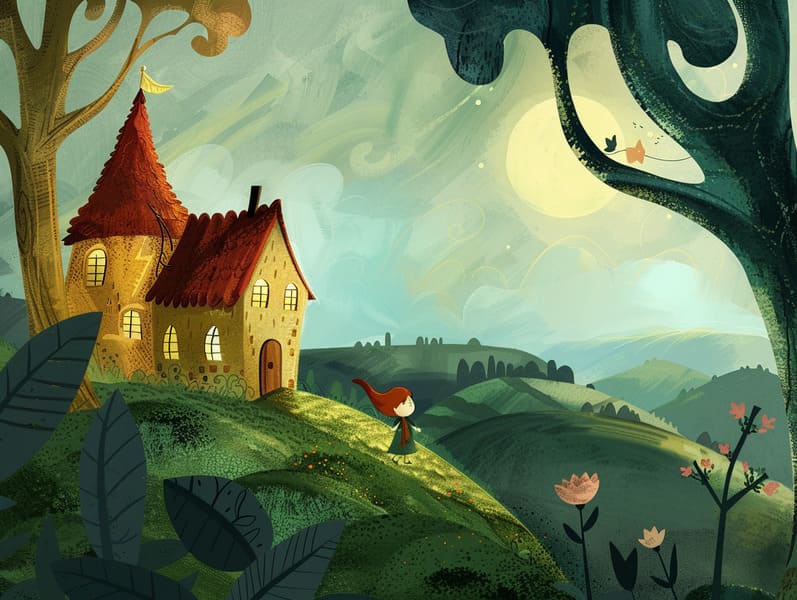The Formation of Bedtime Fairy Tales and Its Continued Charm.
The Formation of Bedtime Fairy Tales and Its Continued Charm.
Blog Article

Historical fairy tales have old origins. These stories have been recounted from one generation to the next well before they were ever written down. They developed from a variety of backgrounds, including African traditions. They were initially transmitted among older generations, often carrying themes and messages mirroring the societal norms and beliefs of the time.
Jacob and Wilhelm Grimm, Jacob and Wilhelm (the Grimm brothers), were among the first to collect many of these beloved fairy tales. Their anthology, "Grimm's Fables," included classics like "The True Bride," "The Story of Hansel and Gretel," and "Schneewittchen," which have since become hallmarks in the world of iconic fairy tales. Similarly, Andersen's fanciful narratives, such as "The Mermaid," and "The Duckling's Story," have stolen hearts worldwide, solidifying their place in the pantheon of classic fairy tales.
Despite their ancient origins, these stories remain as pertinent as ever, especially as nighttime stories for kids. These fantastical tales are now available in numerous formats, including richly illustrated books, whimsical animations, and digital fairy tales.
Their persistent charm can be linked to several magical reasons:
Key Lessons: Ancient fairy tales often convey important moral lessons. Stories like "The Shepherd Boy and the Wolf" teach the value of truthfulness, while "The Tortoise and the Hare" illustrate the virtues of determination and unpretentiousness. These narratives offer children clear distinctions between good and bad, forming their moral compass in a tender yet profound way.
Kindness and Comprehension: Fairy tales frequently illustrate personalities facing difficulties and adversities, fostering young listeners to resonate with their struggles and cheer for their triumphs. For instance, "Beauty's Beast" points out the benefit of looking deeper to perceive the true nature of a person, encouraging kindness and recognition.
Cultural Understanding: Many old fairy tales are infused with the cultural contexts from which they bloomed. Immersing in these narratives can provide intriguing perspectives into different beliefs, cultivating a sense of world insight and comprehension.
Fantasy and Innovation: The mythical elements in fairy tales—supernatural elements—enhance children’s dreaming abilities. These narratives take readers to otherworldly realms, encouraging fantasy ideas and a sense of delight that persists a lifetime.
Classic fairy tales are not only mesmerizing but also illuminating. They function as captivating tools in promoting various mental and emotional abilities in kids. When classic fairy tales are recited, they improve communication skills by showing new linguistic elements and sophisticated sentence structures. This practice also fosters hearing perception and concentration, as the young pay close attention, ready to see what happens next.
Furthermore, talking about the themes and characters of classic fairy tales can enhance analytical skills and analytical skills. Kids are guided to detect patterns, expect results, and understand cause and effect. These contemplations also help children verbalize their thoughts and feelings, advancing their emotional intelligence.
In today’s electronic age, the prevalence of web-based fairy tales has made these fairy tales more obtainable than ever. Web platforms and apps extend vast collections of children's fairy tales that can be browsed or heard anytime, anywhere. Fairy tales narrated are particularly sought after, sharing an enjoyable way for kids to appreciate these enchanting tales. Voice books and read-out-loud videos guide characters and settings to life, often supported by enchanting harmonies and melodies that amplify the narrative journey.
The timeless fascination of ancient fairy tales lies in their ability to shift to changing times while holding onto their core messages. Contemporary retellings of these stories often feature more varied protagonists and modern settings, making them relatable to today’s audience. However, the key lessons of fortitude, understanding, and even-handedness remain unchanged, continuing to connect with kids of all ages.
Fairy tales also offer a sense of protection and homeliness. They render a organized narrative with a obvious beginning, middle, and end, often coming to a close with the solving of conflicts and the triumph of virtue over vice. This assuredness can be calming for the young, affording a sense of steadiness in an constantly changing world.
Ancient fairy tales continue to delight and train new generations, maintaining their fascination and significance in modern society. As children's bedtime stories, they impart a perfect blend of captivation and insight, nurturing moral values, empathy, and creativity. The accessibility of online fairy tales and the well-liked nature of fairy tales read aloud warrant that these old narratives remain acquirable to new generations.
By guarding and making known these stories, we continue to acknowledge the rich tapestry of human imagination and cultural heritage. Whether you are viewing a vividly illustrated book, perusing a online library, or playing an audio story, the beauty of Grimm's fairy tales is always within reach. These narratives show us of the eternal ability of stories and its ability to join us across generations and cultures.
Regardless if you are exploring a vividly illustrated book, enjoying a internet collection, or listening via an check here read-aloud story, the grace of Grimm's fairy tales is always within reach.
These fairy tales emphasize of the timeless influence of narratives and its ability to bring us together across epochs and places, forming a connection that fascinates and enlightens alike.